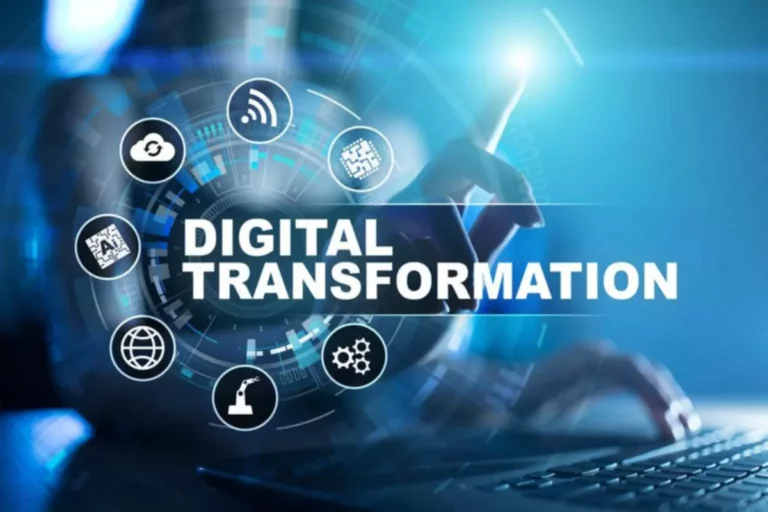Businesses employ enterprise resource planning (ERP) for various reasons, such as expanding, reducing costs, and improving operations. The benefits sought and realized between companies may differ; however, some are worth noting. ERP has evolved over the years from traditional software models that made use of physical client servers and manual entry systems to cloud-based software with remote, web-based access. The platform is generally maintained by the company that created it, with client companies renting services provided by the platform. The complexity of enterprise software pushes corporations to outsource the development of applications they need to run operations.
If successful, the recipient knows that the message can only have come from the holder of the private key. One widely-used tool for privacy protection is what cryptographers call “symmetric” or “secret key” encryption, called that way because one encryption key is used to both encrypt and to decrypt information. This key should obviously be kept secret from anyone not authorised to decrypt the information. Your log-on password, your cash card PIN, and the information you type in to enter your online bank accounts are all examples of secret keys. You share these secret keys only with the parties you want to communicate with, such as the bank or credit card company.
Legacy application migration: 6-Step Guide
These enterprise system attributes offer particular benefits, such as the support of teamwork, an improved response to the marketplace, increased work quality and greater employee collaboration and efficiency. Using an Enterprise Resource Planning (ERP) system can be a major benefit for companies looking to streamline their customer service experience. ERPs allow businesses to automate their customer service process, which helps ensure that each employee is giving customers a consistent experience, and also ensuring that back office functions are as streamlined as possible. Automation saves time, which can then be used towards efforts to respond to customer requests for product information and to forecast for new products. If employees are spending less time on tracking down a customer’s order, they can spend more time developing long-lasting, profitable customer relationships.

As one of the fastest-growing providers worldwide, Intelegencia serves over 200 clients globally, ranging from SMEs to Fortune 1000 enterprises. Here you can choose which regional hub you wish to view, providing you with the most relevant information we have for your specific region. If your specific country is not listed, please select the UK version what are the three primary types of enterprise systems? of the site, as this is best suited to international visitors. ERP5 has been recognized, since the beginning as an innovative and outstanding ERP solution. Hence, the first deployment of ERP5 for Coramy, a European leader in the apparel industry, was awarded best ERP implementation project in the special edition of Décision Informatique in June 2004.
ERP Weaknesses
Enterprise systems can help streamline supply chain management, in large part through the use of data about where, when, and how customers order and suppliers deliver. Ultimately, the ability to streamline the supply chain means that products are delivered to customers more reliably, and at a lower cost, than would otherwise be possible. One example is inventory control, as keeping too much or too little inventory can have a significant effect on a business’ bottom line. Business environments are always changing, and that means that waiting months for data is simply no longer feasible.

Nonetheless, since numerous functions are bundled together into a single package, the cost of the entire system is usually cheaper than going to separate providers for different tools for different areas of the business. Given that the different functions integrated into an EMS system can draw from each other, businesses can streamline their processes and enhance collaboration across various teams, which in turn will create efficiencies. One of the most important aspects of improving the customer experience is having data stored in a way that can be easily analyzed.
How to Measure Business Performance With Information Technology
A properly optimized CRM system can automatically process orders with suppliers and track each department’s efficiency when it’s being manufactured.
Industrial Internet in China: Policies to Enable Industry 4.0 … – China Briefing
Industrial Internet in China: Policies to Enable Industry 4.0 ….
Posted: Wed, 11 Oct 2023 09:31:24 GMT [source]
Helps in retaining customers by tracking their interactions with the company and offering personalized services. Enterprise software has evolved into large-scale systems for the operation of the most modern enterprises and today it’s impossible to ignore their impact on these enterprises’ success. Customer Relationship Management (CRM) is the largest software market in the world that’s capable of handling complex data in one internal databases.
Supply Chain Management (SCM)
We offer a wide range of services, including cloud services, network security, server management, cabling services, mobile device management, among other services. One of the greatest challenges in larger enterprises is producing a consistently positive customer experience. ERP systems usually fail to achieve the objectives that influenced their installation because of a company’s reluctance to abandon old working processes. Some companies may also be reluctant to let go of old software that worked well in the past. The key is to prevent ERP projects from being split into smaller projects, which can result in cost overruns.

There are currently three main types of enterprise systems that cater to different business needs. Such systems allow enterprises to control and maintain stocked products, whether they are raw materials or finished goods ready for shipment. These modules also assist in production planning and in carrying out materials sufficiency assessments. It takes time and effort to set up effective communication so that all the employees can achieve high levels of productivity. ERP5 CRM provides an extensible solution to track customers, their career history, their relation to organizations and all related events.
Our Solutions
On the other hand, an ERP is an individual system that checks inventory and assists with back-office features, as well as helps in production, planning, and management. EMS goes beyond this – it monitors competitors, suggests new market areas and methods of attracting new customers, and keeps an eye on a business’s external relationships. Enterprise resource planning software offers single-system solutions that integrate processes across the business. These applications allow users to interact within a single interface, share information, and enable cross-functional collaboration. Other attributes of the CRM system include integration with other systems and accessibility via mobile devices, allowing employees to update and compare data and to access information from any client site or other location. Equally importantly, CRM supports mass e-mail communications and automates the sales process workflow to improve employee productivity.
Generally, packages include finance, human resource, logistics and manufacturing, supply chain management, and customer relationship management. Thanks to strategic email planning, they reach out to leads, communicate https://www.globalcloudteam.com/ with customers and promote products. Email marketing software offers data interpretation option based on results from surveys, interviews, contact forms and comprehensive website activity analysis.
Increases Efficiency
It helps managers better understand how efficient their work is, and adjust it accordingly. Customer relationship management systems were developed to address the need to raise a sales department’s productivity and provide an effective way to increase sales. Through automation and data centralization, a modern enterprise system has become a key to success for any corporation that wants to be and stay competitive. This software efficiently manages supply chain activities such as product development, production, material sourcing, as well as information systems that coordinate these activities. SCM basically begins with the purchase of raw materials and continues to the final delivery of the product.
- Predictive analytics based on artificial intelligence helps create personalized content for each customer.
- The supply chain is the entire production flow that consists of a number of actions performed by an organization to convert raw materials into finished products and services.
- Without ERP, companies tend to operate in silos, with each department using its own disconnected system.
- ERP systems promote the free flow of communication and sharing of knowledge across an organization, the integration of systems for improved productivity and efficiencies, and increased synergies across teams and departments.
- For example, marketing staff can use the information from the sales about the most frequent client’s needs, and the sales specialists can benefit from the marketers’ database.
- On the other hand, ERP solutions can be implemented quickly since they can be quickly integrated with existing software.